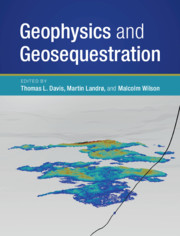Book contents
- Geophysics and Geosequestration
- Geophysics and Geosequestration
- Copyright page
- Contents
- Contributors
- Preface
- Acknowledgments
- Abbreviations
- Part I Introduction
- Chapter 1 Climate Change and the Role of Carbon Capture and Storage in Mitigation
- Chapter 2 The Role of Geophysics in Carbon Capture and Storage
- Chapter 3 Goals of CO2 Monitoring
- Part II Geophysical Techniques
- Part III Case Studies
- Part IV Summary
- Index
- References
Chapter 1 - Climate Change and the Role of Carbon Capture and Storage in Mitigation
from Part I - Introduction
Published online by Cambridge University Press: 19 April 2019
- Geophysics and Geosequestration
- Geophysics and Geosequestration
- Copyright page
- Contents
- Contributors
- Preface
- Acknowledgments
- Abbreviations
- Part I Introduction
- Chapter 1 Climate Change and the Role of Carbon Capture and Storage in Mitigation
- Chapter 2 The Role of Geophysics in Carbon Capture and Storage
- Chapter 3 Goals of CO2 Monitoring
- Part II Geophysical Techniques
- Part III Case Studies
- Part IV Summary
- Index
- References
- Type
- Chapter
- Information
- Geophysics and Geosequestration , pp. 1 - 10Publisher: Cambridge University PressPrint publication year: 2019



